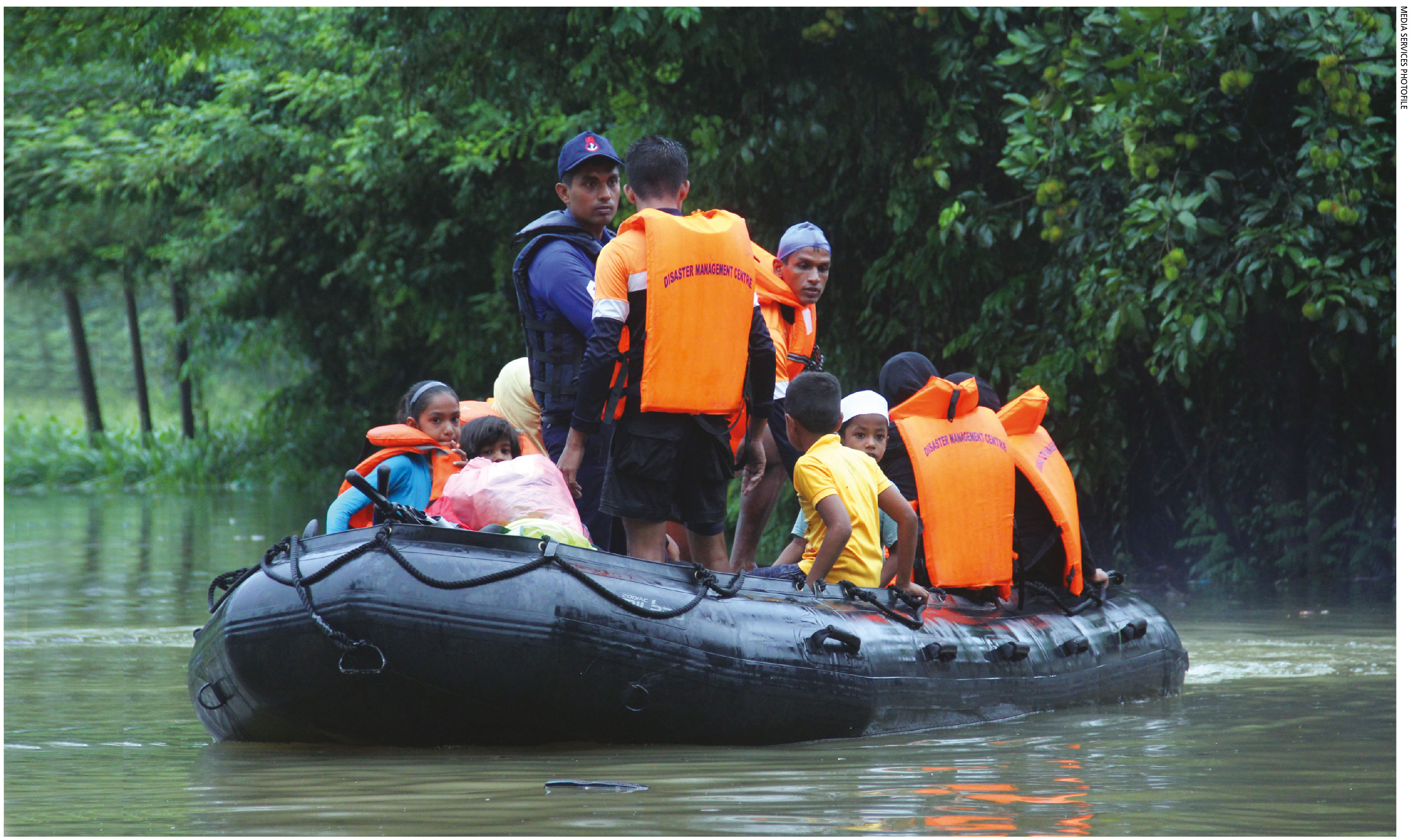CLIMATE CHANGE
WEATHERING THE STORMS
Zulfath Saheed highlights the urgent need to build resilience amid climate change
In late December, the Northern Province was hit by flooding and adverse weather conditions, while the annual southwest monsoon starting around May caused severe damage throughout western slopes and littoral with heavy rainfall causing flashfloods in some regions.
 The monsoonal floods last year impacted 19 districts and killed at least 21 people. An estimated 150,000 persons were affected while more than 20 others were reported missing.
The monsoonal floods last year impacted 19 districts and killed at least 21 people. An estimated 150,000 persons were affected while more than 20 others were reported missing.
Apart from the grave loss of life and damage to property, climate related events are exerting ever greater pressure on the national economy as well. With climate change continuing unabated, island nations such as Sri Lanka that bear the brunt of its devastating effects must take urgent steps to minimise the associated risks.
NATURAL DISASTERS Turning the clock back to May 2017, heavy landslides and floods occurred in Sri Lanka following heavy monsoon rains in southwestern regions of the country. More than 200 people died during the worst rainfall recorded in the island since 2003.
Those monsoons displaced more than 600,000 people from their homes and 12 districts were affected – the inland district of Ratnapura where over 20,000 people faced flashfloods was the worst affected.
These and other related statistics are taken into consideration by the Germanwatch Global Climate Risk Index 2019, which analyses to what extent nations and regions have been affected by weather related loss events (storms, floods, heatwaves etc.). Its analyses reveal that the countries and territories affected most in 2017 were Puerto Rico, Sri Lanka and Dominica.
According to the report, as a result of the landslides and floods that occurred in 2017, Sri Lanka suffered losses of over US$ 3 billion in purchasing power parity (PPP) terms. Moreover, the country had to settle for a median rank of No. 31 and incurred an average loss of 491 million dollars annually in PPP terms between 1998 and 2017.
EXPOSURE GAUGE In its analysis, the Global Climate Risk Index 2019 report reconfirms the previous results of the Climate Risk Index: less developed countries are generally more affected than industrialised nations.
Regarding future climate change, the Climate Risk Index lays claim to being “a red flag for already existing vulnerability that may further increase in regions where extreme events will become more frequent or more severe due to climate change.” Therefore, it asserts that effective climate change mitigation “is… in the self-interest of all countries worldwide.”
The index also urged countries at the Katowice Climate Change Conference (COP24) to adopt the rule book needed for implementing the Paris Agreement including the global adaptation goal and adaptation communication guidelines while observing that “loss and damage appears as a crosscutting issue with significant risk of being used as a negotiation chip.”
CLIMATE ACCORD The Paris Agreement, which came into force on 4 November 2016, brings all nations onto common ground – a common cause to make ambitious efforts to combat climate change and adapt to its implications with a higher level of support to assist developing countries to do so.
Its central aim is to strengthen the global response to the threat of climate change by limiting the rise in world temperature to well below 2ºC above preindustrial levels – and fall in line with efforts to limit the temperature increase even further to 1.5ºC.
Additionally, the agreement aims to strengthen the ability of countries to deal with the impacts of climate change.
The Paris Agreement requires all parties to put forward their best effort through nationally determined contributions (NDCs) and strengthen these efforts in the years ahead. This includes requirements that all parties report regularly on their emissions and implementation efforts.
As fortune would have it, negotiators at COP24 were able to reach an agreement that bolsters the Paris accord – despite the ‘Trump effect’ whereby the administration of President Donald Trump announced its intent to withdraw from the agreement.
BUILDING RESILIENCE According to the World Bank, “while floods and other extreme weather events can have an immediate and terrible impact, rising temperatures and unpredictable precipitation – what we might consider ‘average weather’ – can prove as devastating.”
To this end, Lead Economist in the Office of the Chief Economist of the World Bank’s South Asia Region Muthukumara Mani asserts: “Sustainable development is the best adaptation strategy since it is associated with improved infrastructure, market oriented reforms, enhanced human capabilities, and stronger institutional capacity to respond to the increasing threat of climate change and natural disasters.”
And the World Bank affirms: “Governments don’t have to choose between investing in development or climate resilience – the two go hand in hand.”






